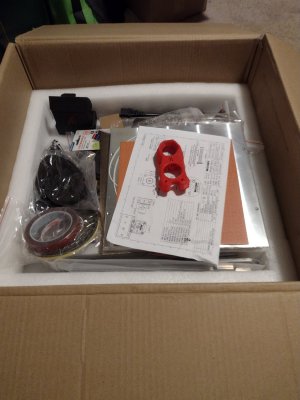I've had great luck with the inductive probe in the Prusa MK3. I have considered using one in the Voron as well, either the Panasonic, or the Omron or even a Prusa SuperPinda which I have spares of on hand. I have heard that some of the Omron probes melt, it's hard to tell but they are probably clones rather than the real deal. Perhaps the newer StealthBurner reduces this problem. They did some work with the airflow that might help here. But even if it is going to get melty that's a future problem, and one that doesn't happen to every printer.
Following the build plans with the supplied sensor also allows using the provided starting macros for Klipper which could be quite helpful.
So why consider the Voron Tap probe? It compensates for nozzle changes, and it compensates for print sheet changes. It avoids the time and complexity of docking and undocking a clicky probe, and the unreliability of switch based probes. The inductive probes are reliable, but they don't compensate for nozzle length or print sheet coating thickness. They won't work at all on glass or G10 print surfaces. The Prusa compensates for the sheet changes by having a separate Z calibration memory for each sheet that you set up. But every time a nozzle is changed you have to re-set all the Z calibrations for each sheet. The Revo is supposed to solve this by being manufactured to the same length, but some say that there is some variation even so. By using the nozzle as the probe there are many things solved. Many new printer designs are trying to do this with strain gauges or accelerometers or other techniques. The Voron Tap uses a small linear rail to allow motion, a magnetic system to hold it in place while printing, and an inexpensive but precise optical switch to register the motion. There is still a Z calibration needed to determine how far the nozzle moves toward the bed before the optical switch triggers, but this should not change with nozzle changes or print sheet changes. There may still be some tuning for print sheet texture as this shifts the detection point to the peaks of the texture rather than the average height of the sheet.
Well, today one of the two boxes of Voron parts was delivered. The other box was not on this truck. It is listed as about 60 miles away. I haven't unpacked this larger box to see what is missing, so what would 10 pounds be? I'm guessing the frame is in the missing box, as that is the only "choice" item - the color of the frame.
I see more Pi Zero 2 W's landed somewhere in the world today. Adafruit had some a few days ago, gone now. I wonder if some are going to land elsewhere in the US soon. The Pi Zero 2 W is sufficient for running Klipper or Octoprint. If you are set up to order from foreign sources you could possibly get one that way as well.
It seems to have quieted down since the other two kits arrived. Folks must be busy assembling...



